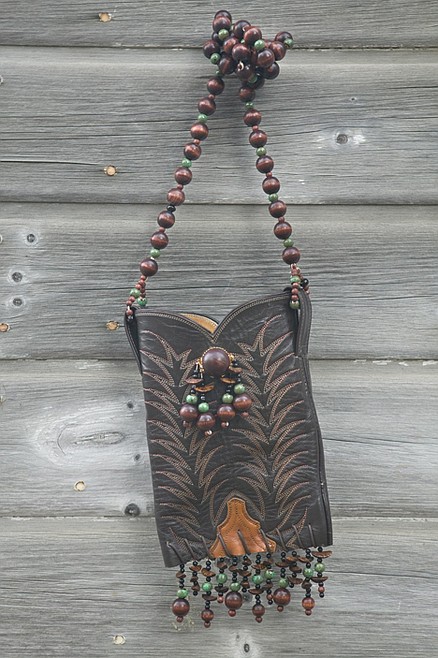From threadbare to green wear
In the past couple of years, there has been a flood of "green" fabrics cropping up in stores. Organic cotton, bamboo and recycled synthetic textiles are all the rage. But even though these newfangled fabrics are indeed eco-friendlier options than we've seen in the past, we're still overlooking the greenest garments of all - those that are already in our closets or hanging on thrift-store racks just waiting to be renewed, refreshed and reborn into whatever fashion we fancy.
According to the EPA, the average American throws away more than 68 pounds of clothing and other textiles per year. It seems we're not only a fast-food nation but also a "fast fashion" nation in which clothing has become cheap, easy to come by and disposable. Even if we're buying the latest trends in fibers that are produced without pesticides or grown from sustainable sources, we're still contributing to the significant waste involved in manufacturing new items, and we're more apt to toss them that we are to mend and make do.
Our grandparents never dreamed that consuming clothing carelessly would become commonplace. If a shirt could be mended or tailored to fit another family member, then that's what you did with it. Clothes that were too weathered to be worn were recycled within the home as quilts or all-purpose rags. During World War I, clothing manufacturers condensed production and actually urged designers to create styles using less fabric and extraneous decoration. Campaigns by the government encouraged citizens to "Make economy fashionable lest it become obligatory."
Having grown up in a household where "waste not, want not" was a way of life, I am delighted to see a resurgence in wardrobe reconstruction. No longer is it restricted to the sewing rooms of frugal moms and old-fashioned farm girls. Runway models and celebrities are buzzing about "upcycling" ditched duds into haute couture. At the 2010 Golden Globe Awards ceremony, Livia Giuggioli (wife of actor Colin Firth) walked the red carpet in a stunning secondhand wedding dress that had been redesigned to suit the occasion. How's that for high fashion with heart?
If you would like to get in on the ground floor of the greenest fashion trend going, think upcycle! Whether you want to reconstruct your own retro-style wardrobe or design clothing to sell on the green market, here are a few simple ideas for upcycling with flair.
Where to start: The easiest place to look for vintage patterns, tantalizing textures and gorgeous garnishes is within the depths of your own closet. "Shop" for items that you haven't worn in years, or those that you tend to try on but hang right back up because they just don't fit right. These garments may not feel flattering as is, but try looking at them with an eye for possibility. Don't be afraid to imagine snipping and sewing your way to transformation. Cutting up your unwanted clothing is the first step to becoming a deconstruction design diva.
Thrifty treasures: Once you've whetted your creative appetite with the contents of your closet, head for the local thrift store to discover a wealth of textiles in the form of abandoned curtains, blankets, dust ruffles, leather footwear and belts, and clothes galore. Even men's old ties can be reborn as satin shirt cuffs, collars or decorative flowers for gussying up a repurposed purse.
One of my favorite perks of upcycling is realizing that many of the accessories you need are included with the garments you gather - think lace, elastic, zippers, pockets, buttons, embroidered patches, tassels, beads and beyond.
Ideas and inspirations: There are so many ways to repurpose fabrics and fibers that it can be a little overwhelming to come up with your first project. For more ideas and tutorials for do-it-yourself designs, check out Threadbanger Projects (www.threadbanger.com/tb-projects) and The Storque, a blog hosted by Etsy that is packed with projects and resources where you can also buy upcycled clothing from other designers (www.etsy.com/storque/search/title/upcycled).
Copyright 2010, MaryJane Butters Distributed by United Feature Syndicate Inc.

